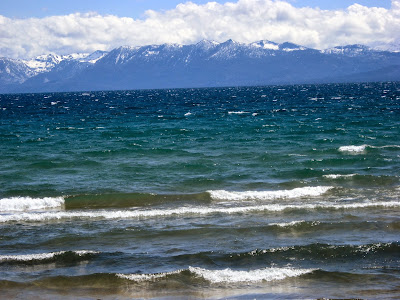The Lake Tahoe region of
the Sierra Nevada range has a lot more to offer than Lake Tahoe itself. To the
west and the south of the lake on the California side are three wilderness
areas surrounded by the El Dorado National Forest, the most popular being the
spectacular Desolation Wilderness. This 99-square-mile area of outdoor
adventure has over a hundred small lakes amidst striking peaks and
mountain passes of white volcanic granite, alpine and sub-alpine forests, and
glacially-formed meadows and valleys. It extends from the southeast near the
Echo Lake complex (easily accessible from U.S. 50) to Loon Lake on the
northwest, which is accessible from Ice House Road. Technically,
these bordering lakes are in the National Forest just outside the wilderness boundary, and the beauty they offer are
nothing to sneeze at either. And these lakes provide car camping, boating,
hiking, fishing, and other recreational activities.
I haven’t quite yet
graduated to the deep wilderness backpacking excursions that would be required
to hike into the Desolation Wilderness interior, but I have enjoyed visiting
its edges, peering at its enticing viewshed, and hiking, birding, picnicking,
and even spinning in circles on a raft in the middle of Wrights Lake. In August
of 2013, we decided to visit Loon Lake. We chose to take the Wentworth Springs
Road out of Georgetown, stopping for a few snapshots at Stumpy Meadows Lake
(well, we had to stop there, mom’s nickname is Stump). We accessed Loon Lake
from its south shore and started looking for a good spot to have lunch. The
north shore Loon Lake campground provided that spot, so we paid a small day fee
and grabbed a site. After our nice picnic lunch and me getting stung by a yellow
jacket, we took the very short hike down to the lake. A large pile of granite
rocks provided sweet couches to kick back upon on the lake’s northern shore and
look across towards the Desolation Wilderness. The sun was out and I was so
relaxed, I think I caught a snooze.



























